Delicately sweet with a flavor only chestnuts can bring, homemade chestnut pasta is a great way to use chestnut flour. Sweet pasta might sound odd, but as it's mixed with all-purpose flour it's not overpowering. The finished noodles are a perfect pairing with game, mushrooms, and other fall ingredients. If you like to make pasta at home with interesting ingredients this is one you have to try.
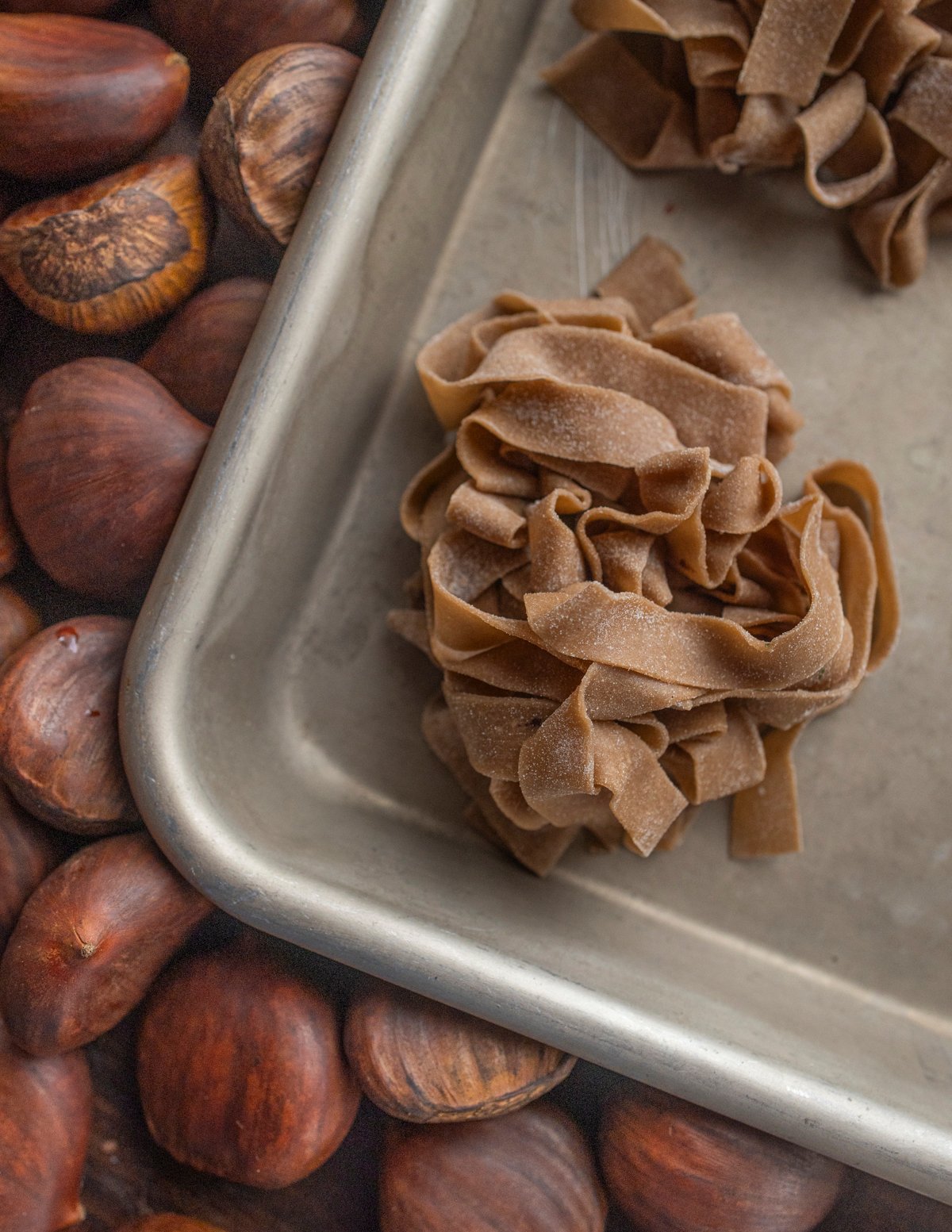
To make the pasta you'll need chestnut flour. Although it can be made at home by grinding dried chestnuts, it's basically impossible to get the flour as fine as the Italian chestnut flour you can buy online.
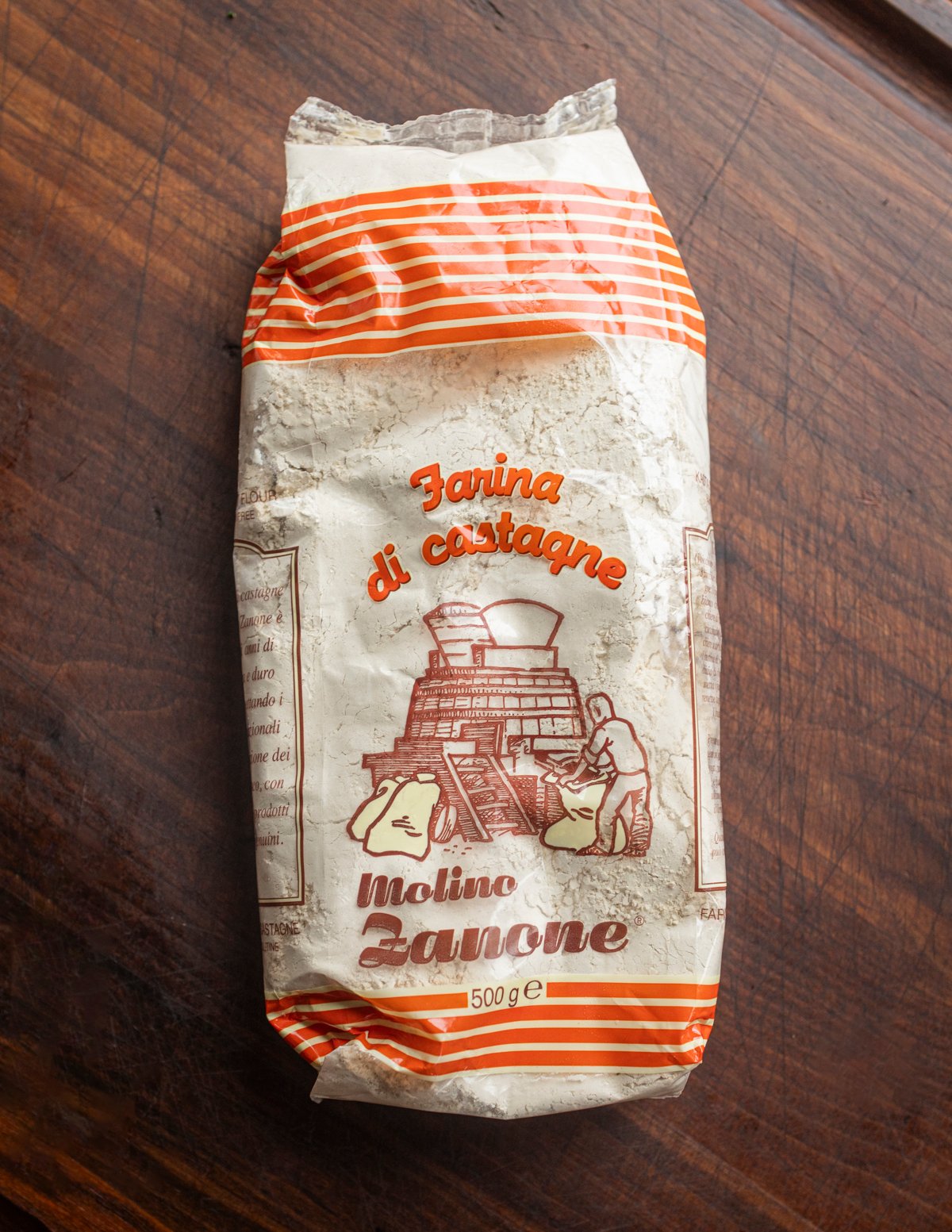
With some recipes you can get away with coarse, homemade chestnut flour, but for pasta you need the finest flour possible. Otherwise the noodles will be brittle and difficult to roll out.
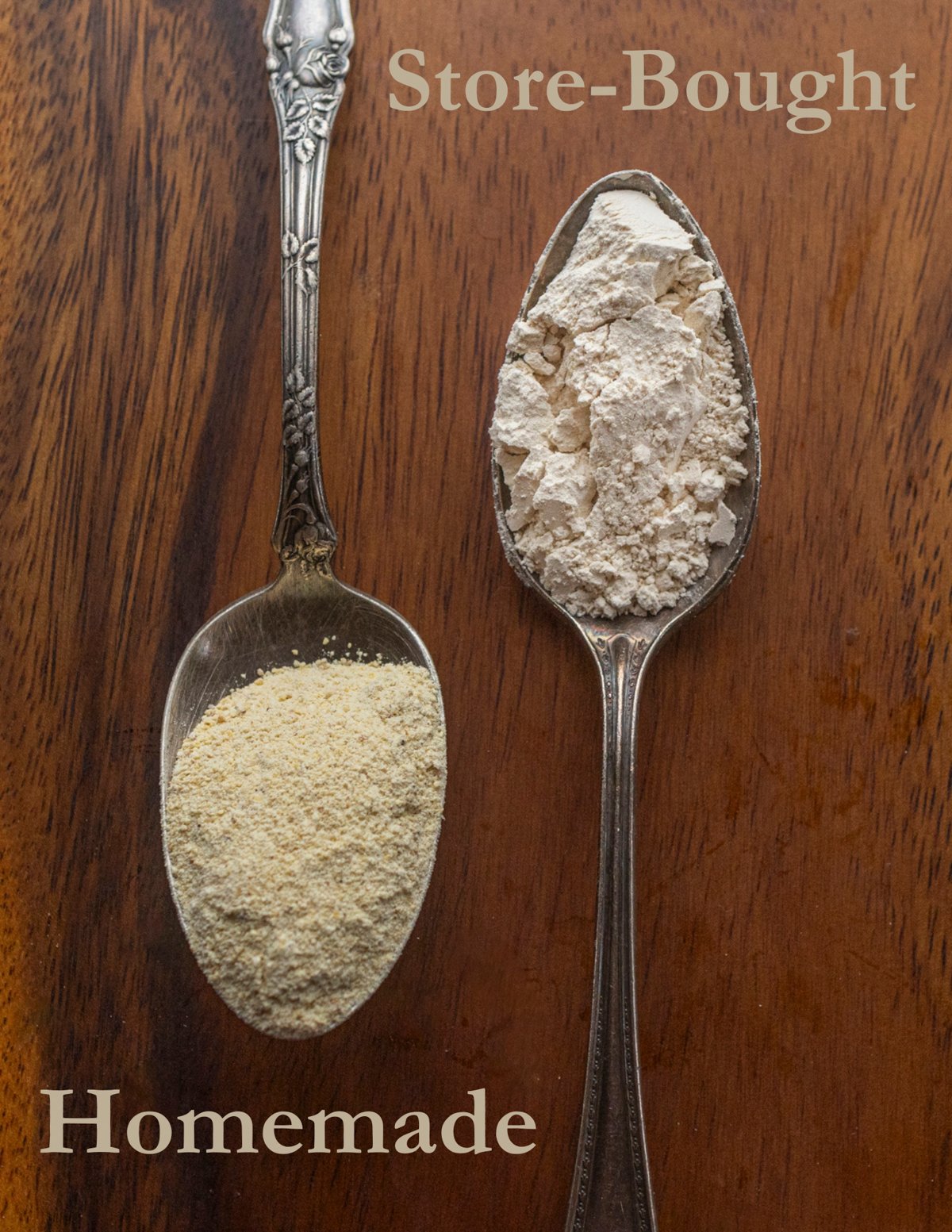
Tips
- You'll notice only egg yolks are used in this pasta. Using whole eggs will give you an inferior dough that may be more difficult to roll out and will discolor, oxidizing after a day or two if made ahead of time.
- Only extremely fine commercial chestnut flour should be used in this recipe. If you make your own flour from chestnuts at home, try using it to make polenta or pancakes.
- Chestnut flour pasta is unique in that unlike other non-glutinous flours, it can be substituted for up to 50% of the total weight of wheat flour in the recipe. Typically you would never add more than 30% of a non-glutinous flour, but chestnut flour is rich in starch and, for whatever reason, will form a soft, pliable pasta dough.
How to Make Chestnut Flour Pasta
Just like other pasta doughs you'll mix flour, salt, and egg yolks together with water until they form a pliable dough. I use a stand mixer with the hook attachment, removing the dough when it comes together.
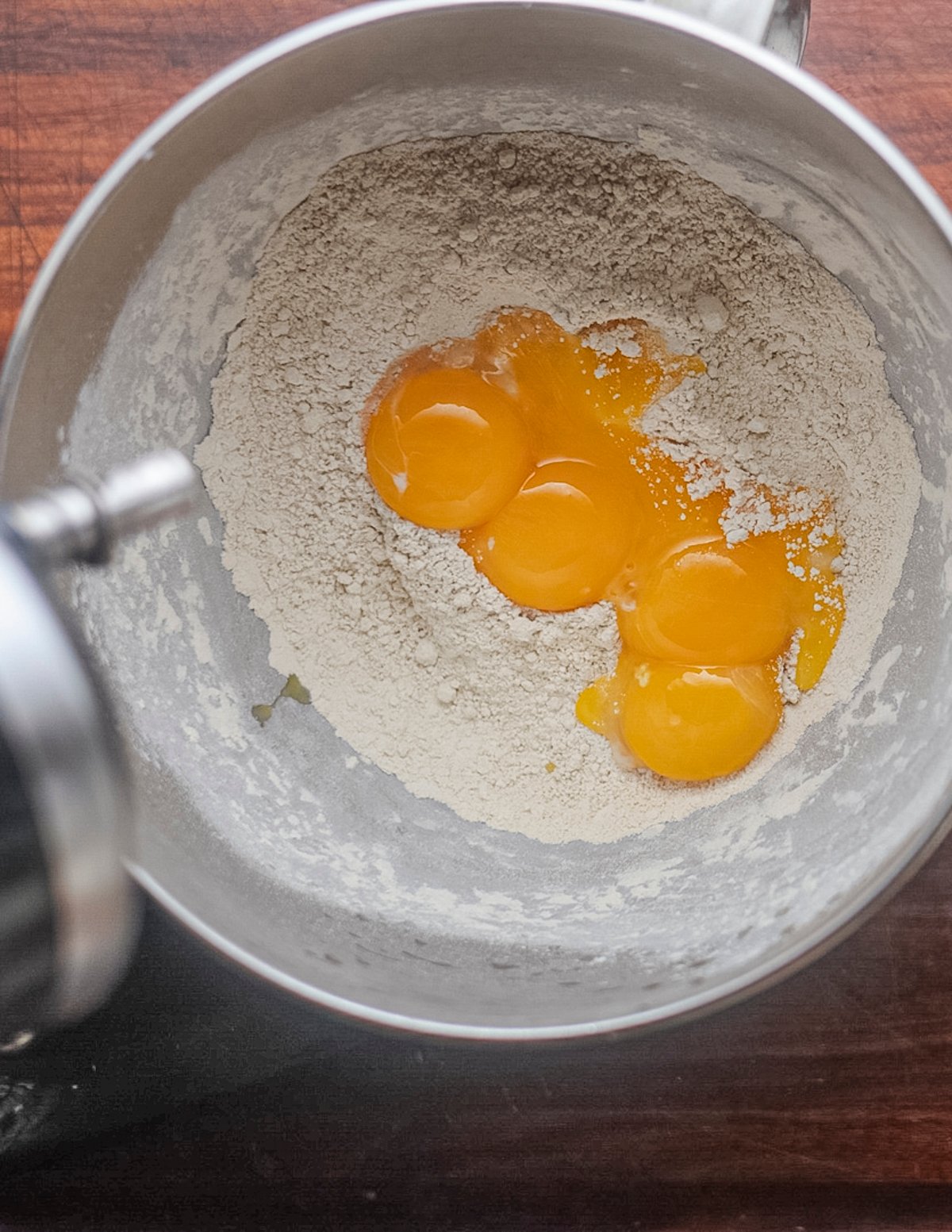
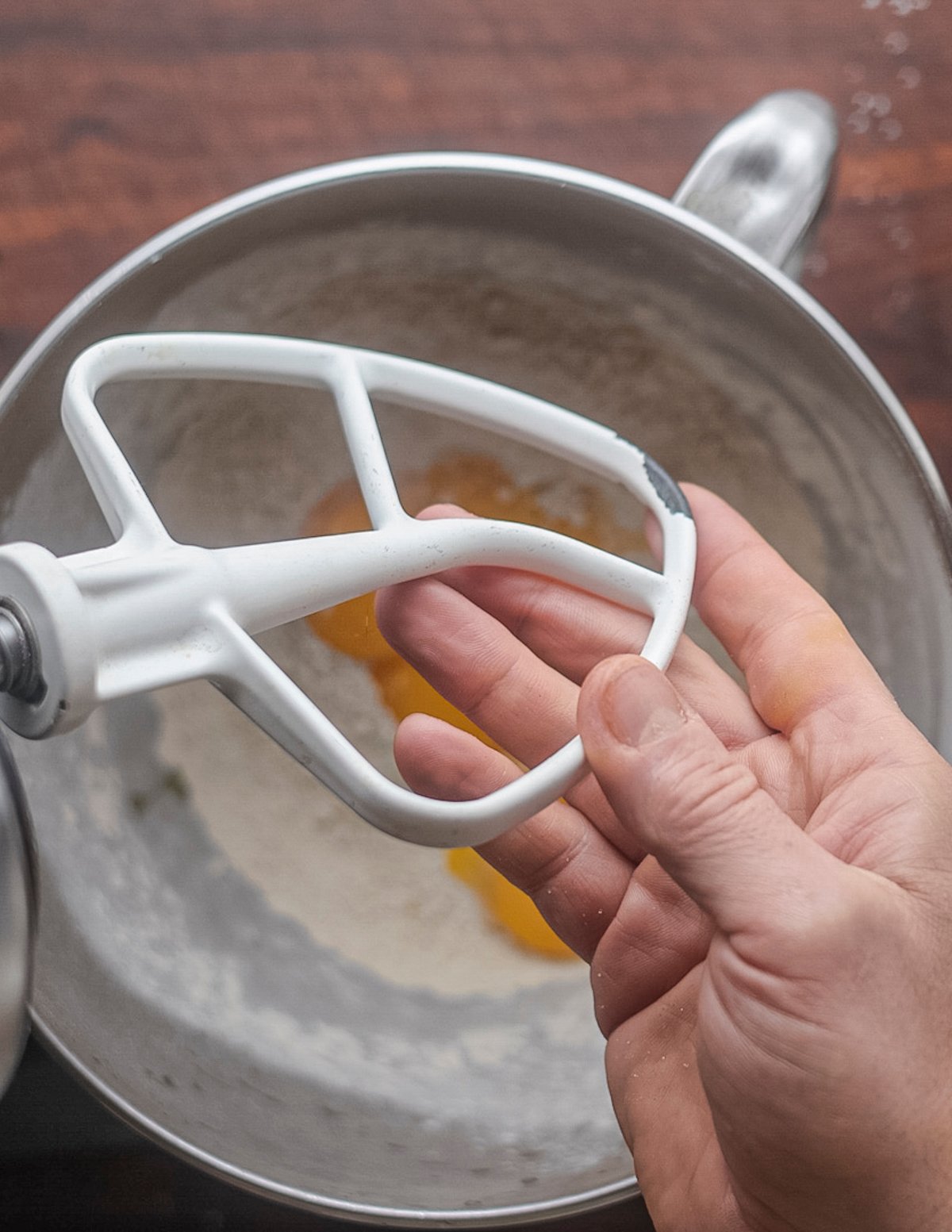
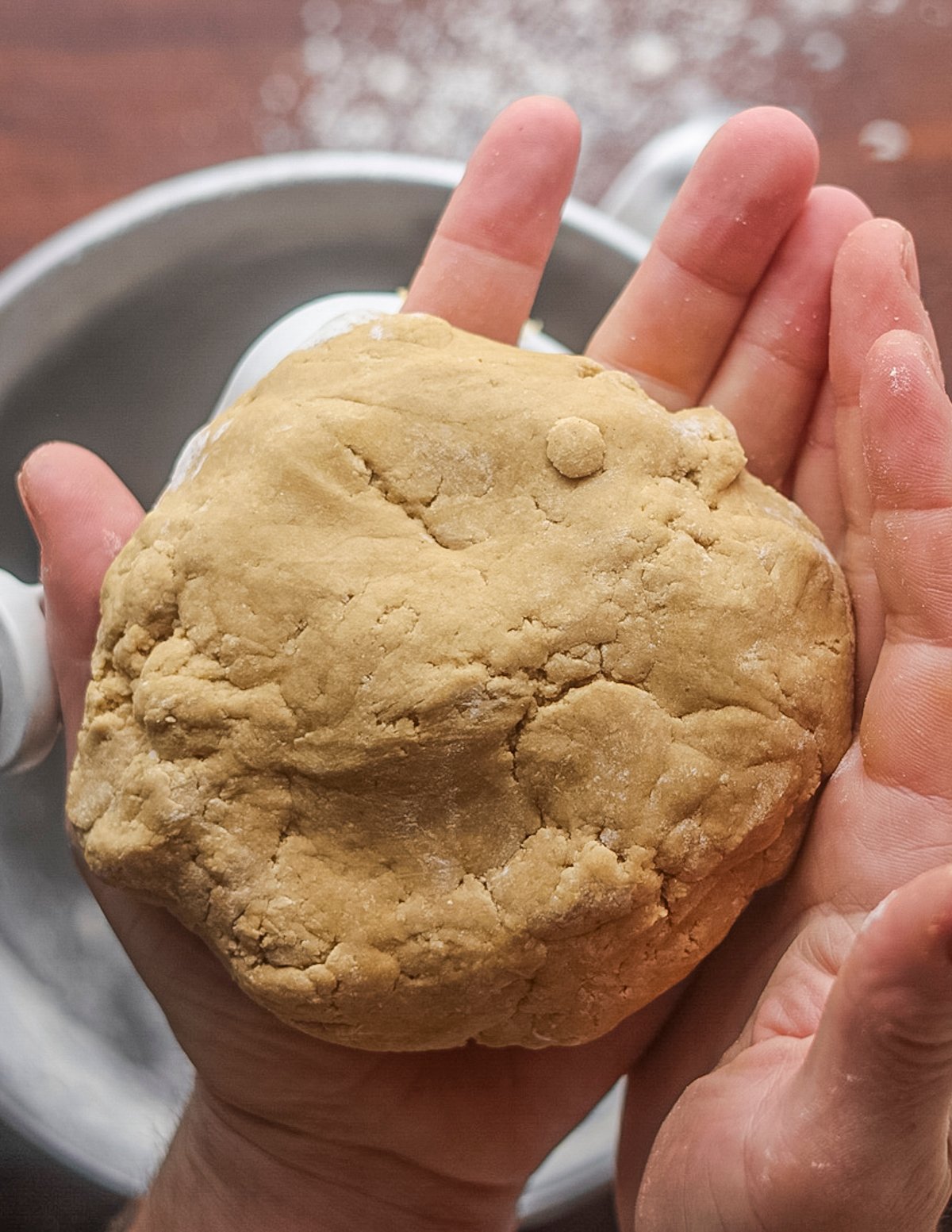
After kneading by hand for a moment it's ready. It doesn't take nearly as long to make as most other pasta doughs. Once the dough is rolled out, flatten it into a thin disc shape as you would a pie crust, wrap it cling film and allow it to rest for at least 30 minutes before rolling out.
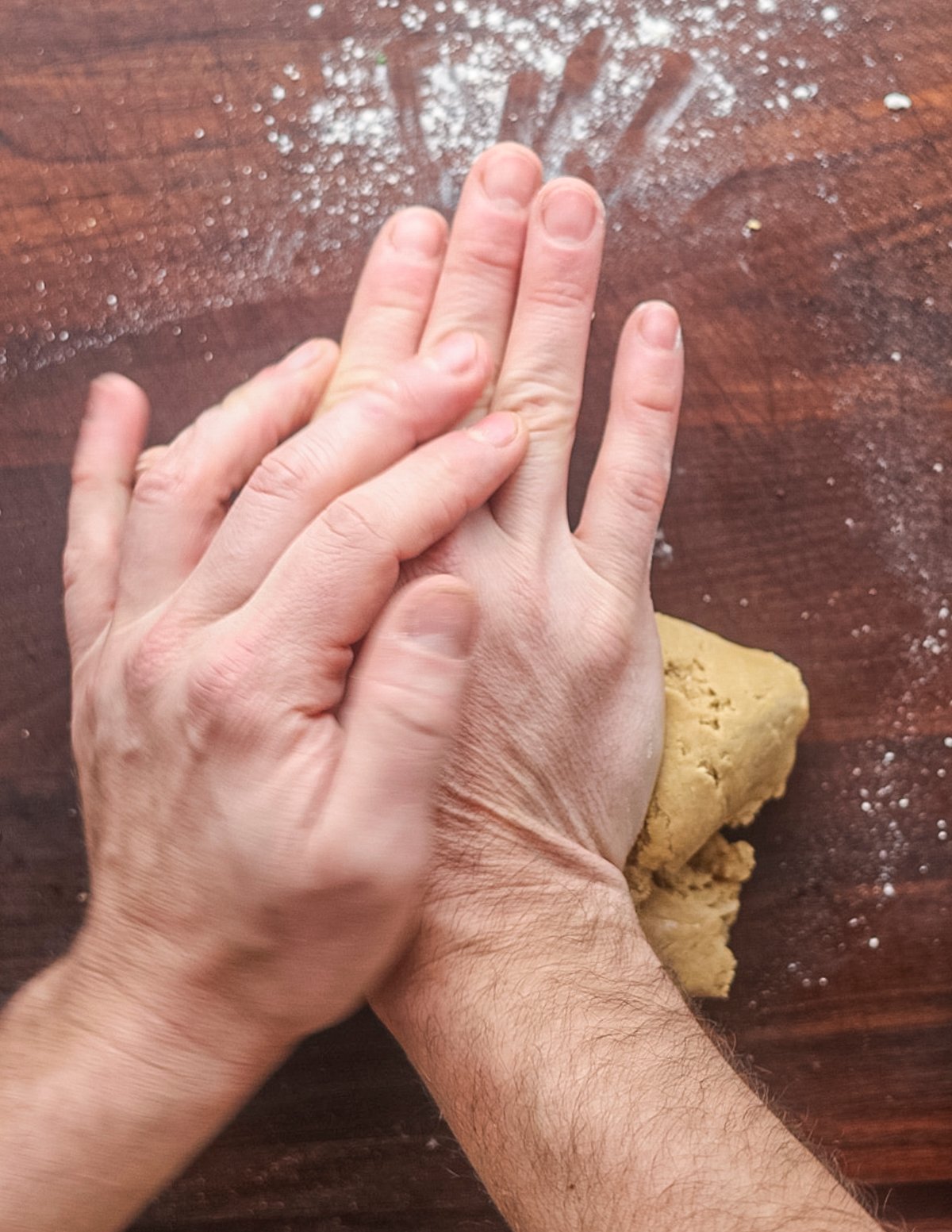
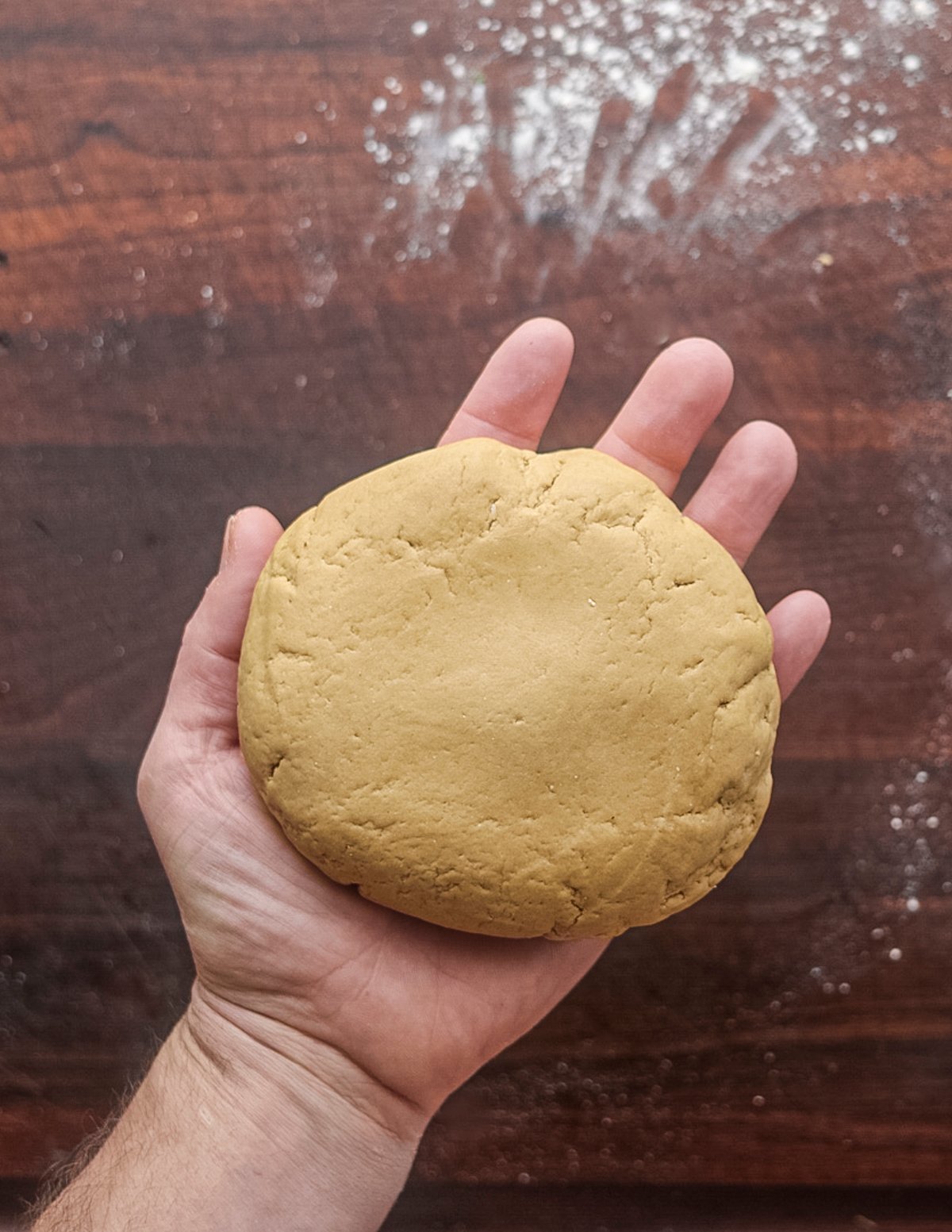
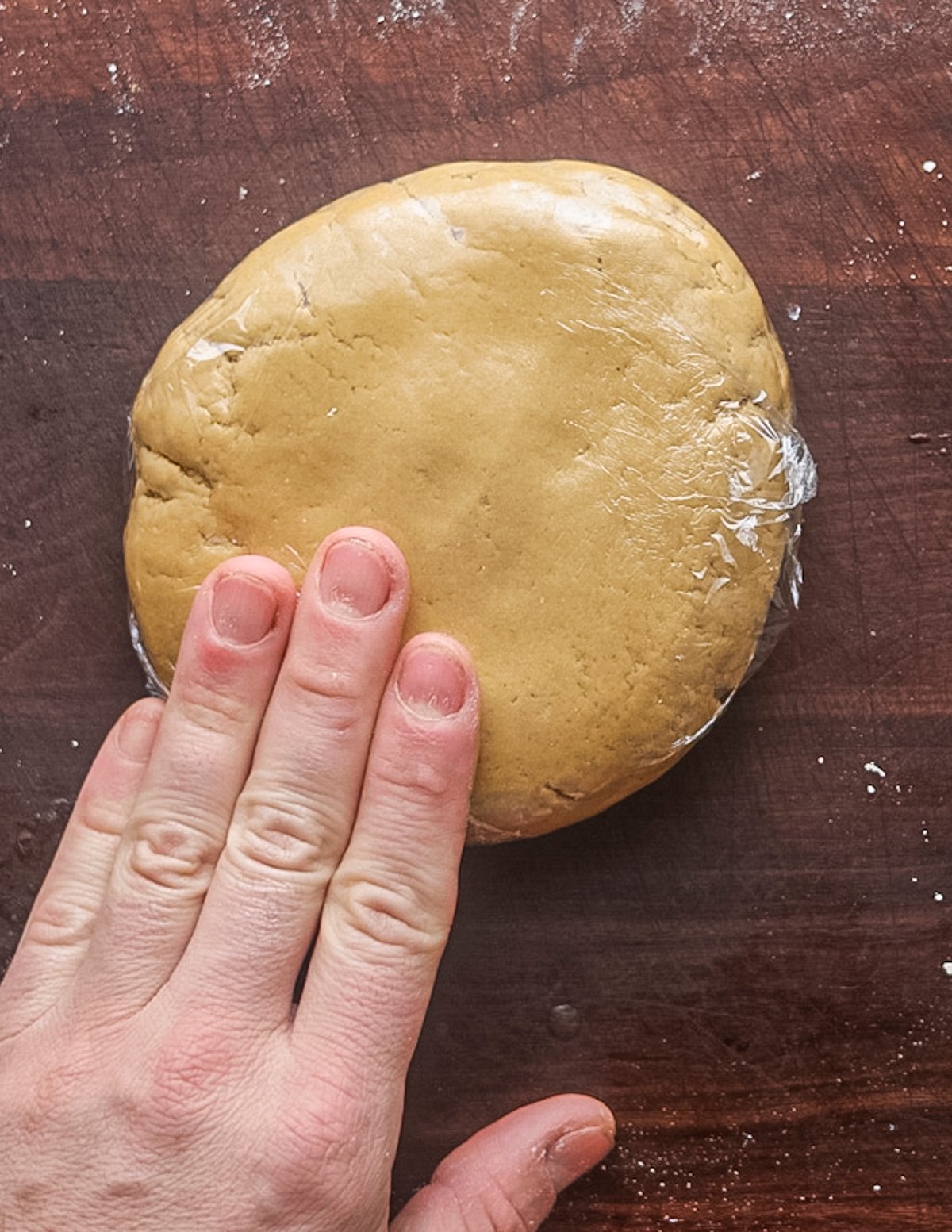
Next cut the dough into strips, flatten with a rolling pin and rolling through a pasta maker. If you don't have a pasta maker you can also use a rolling pin as the dough is reasonably pliable and soft.
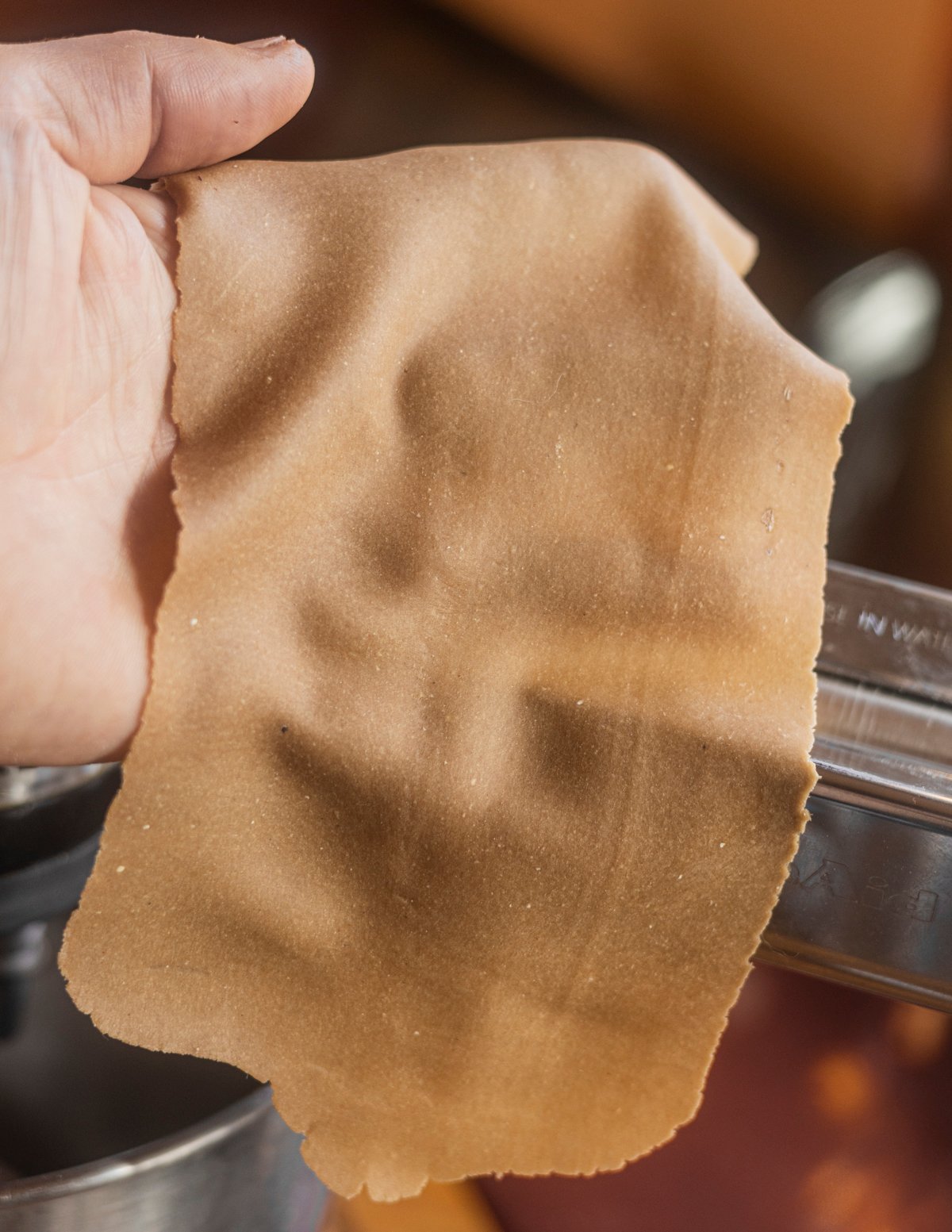
Put the strips of dough through the pasta maker attachment folding it into thirds so that the width matches that of the pasta roller. Roll the dough out, stopping at the third to last setting. If you attempt to make the noodles extremely thin they can break apart while cooking.
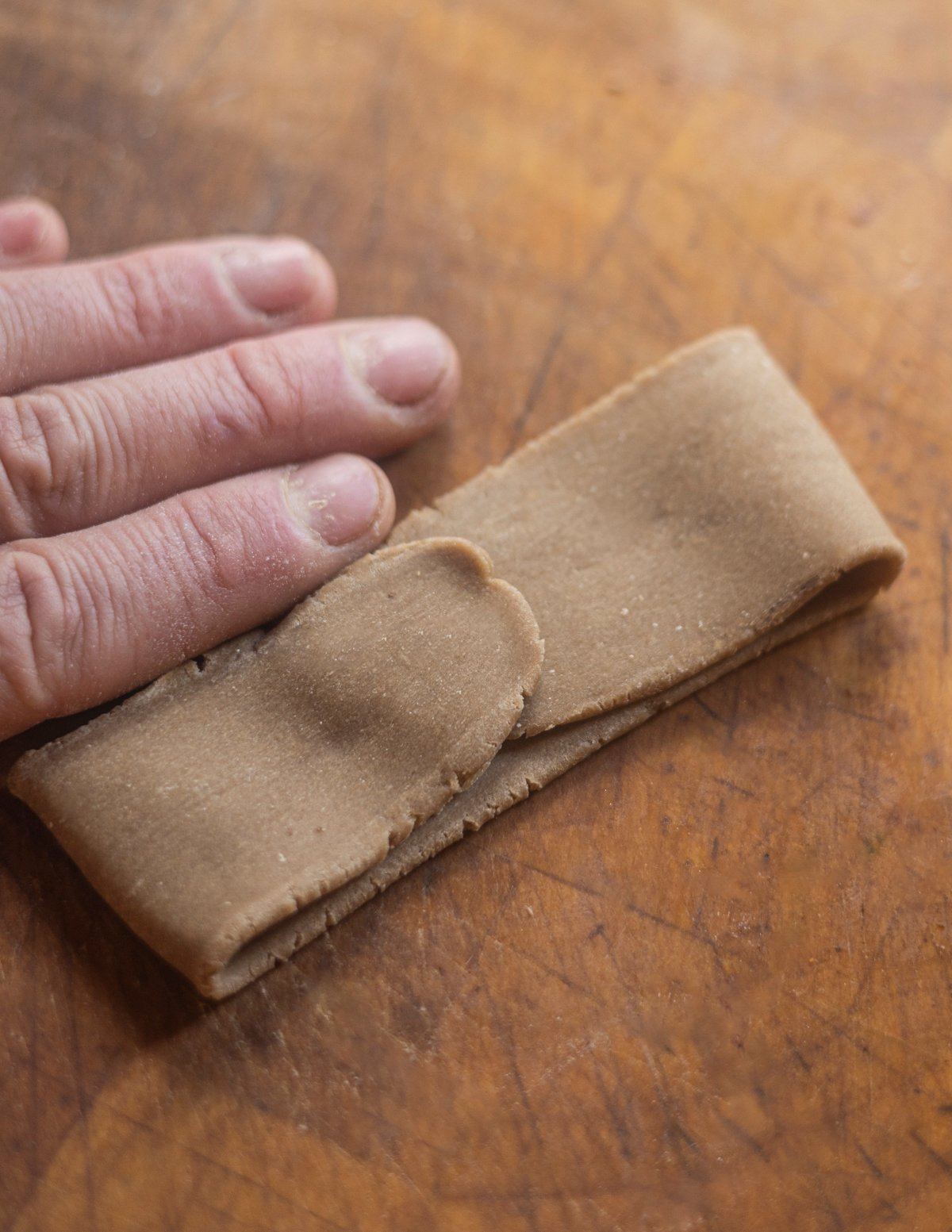
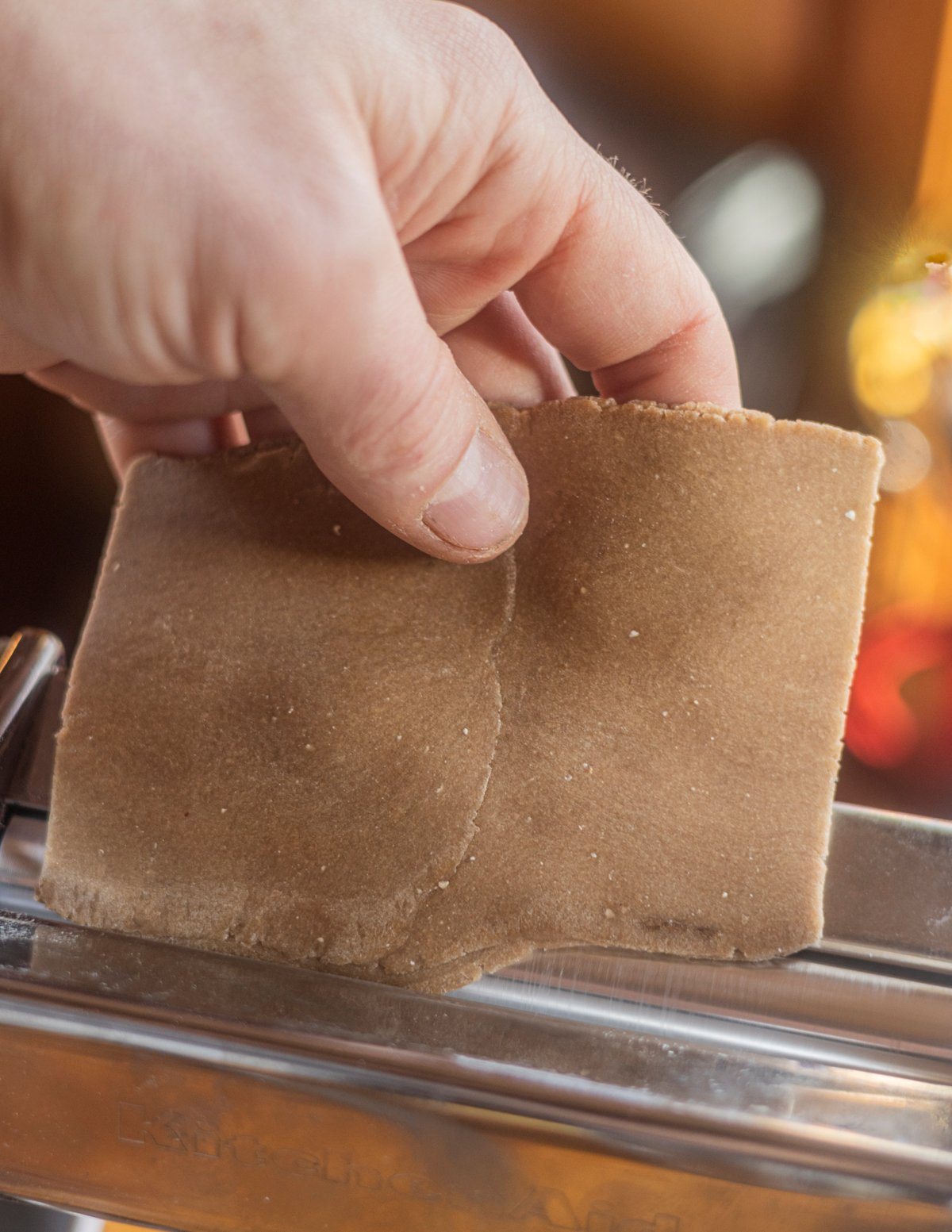
Trim each sheet of pasta dough to remove any rough edges, then lightly flour, roll them up and slice into noodles.
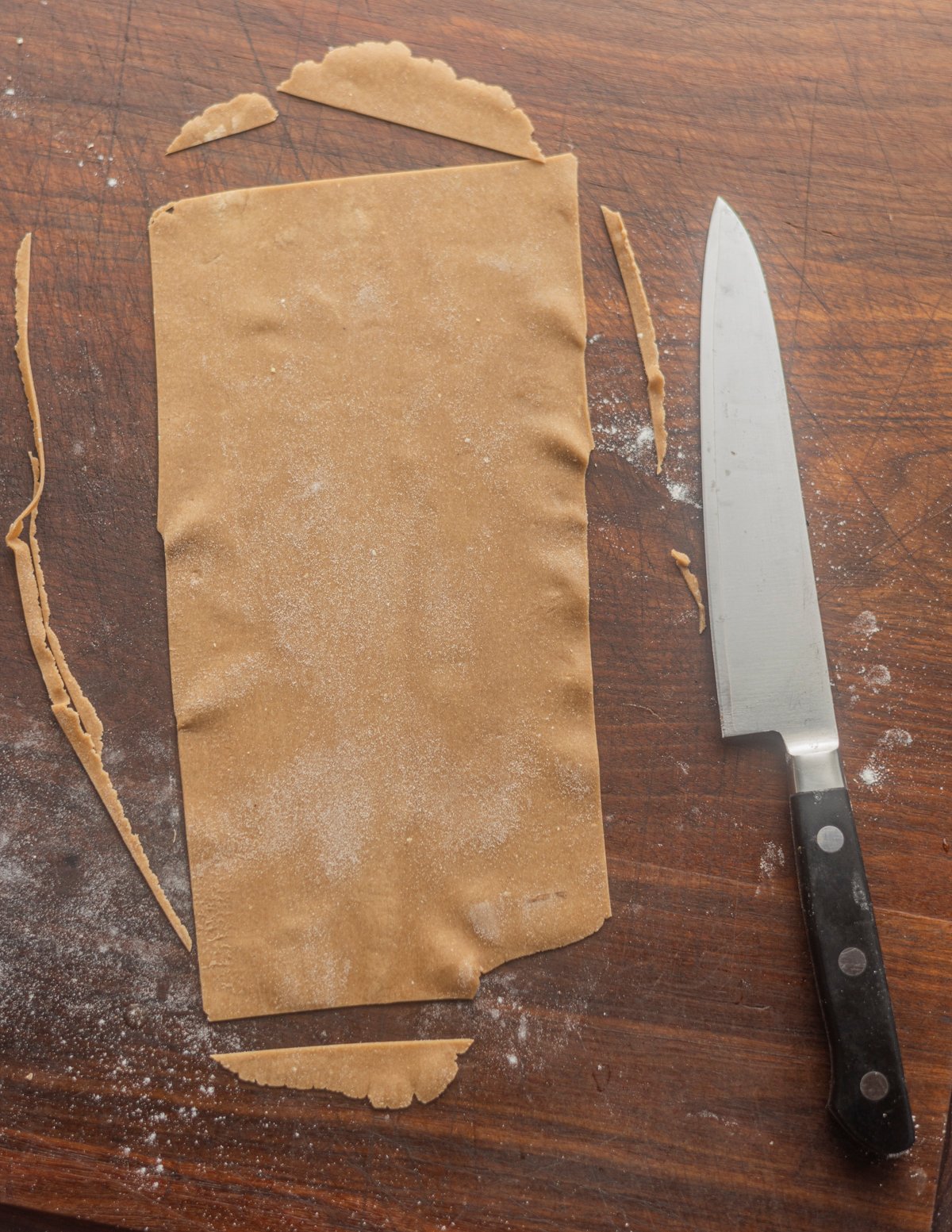
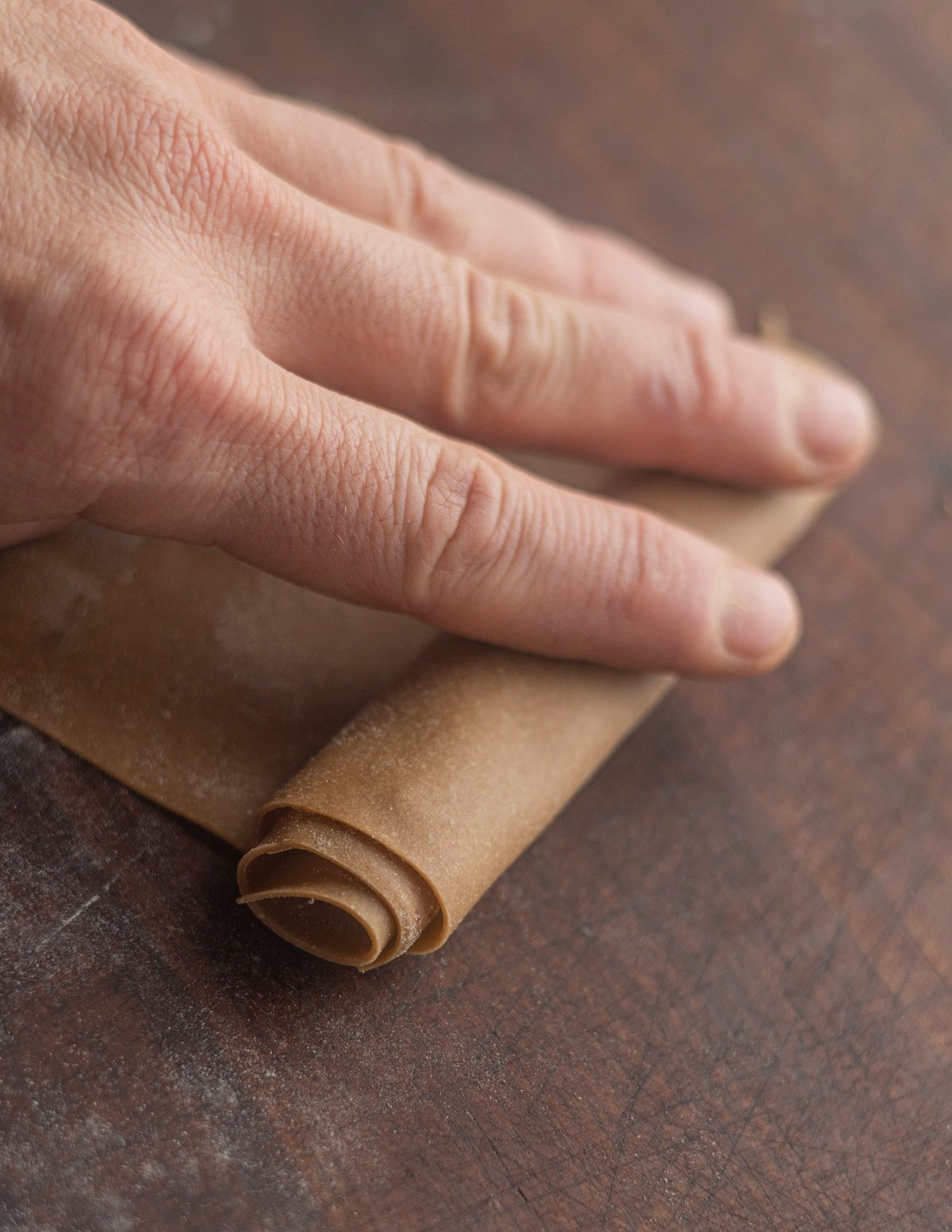
Dust the noodles with flour and mound them into small nests. Wrapped with cling film they'll keep for a few days without drying out in the refrigerator.
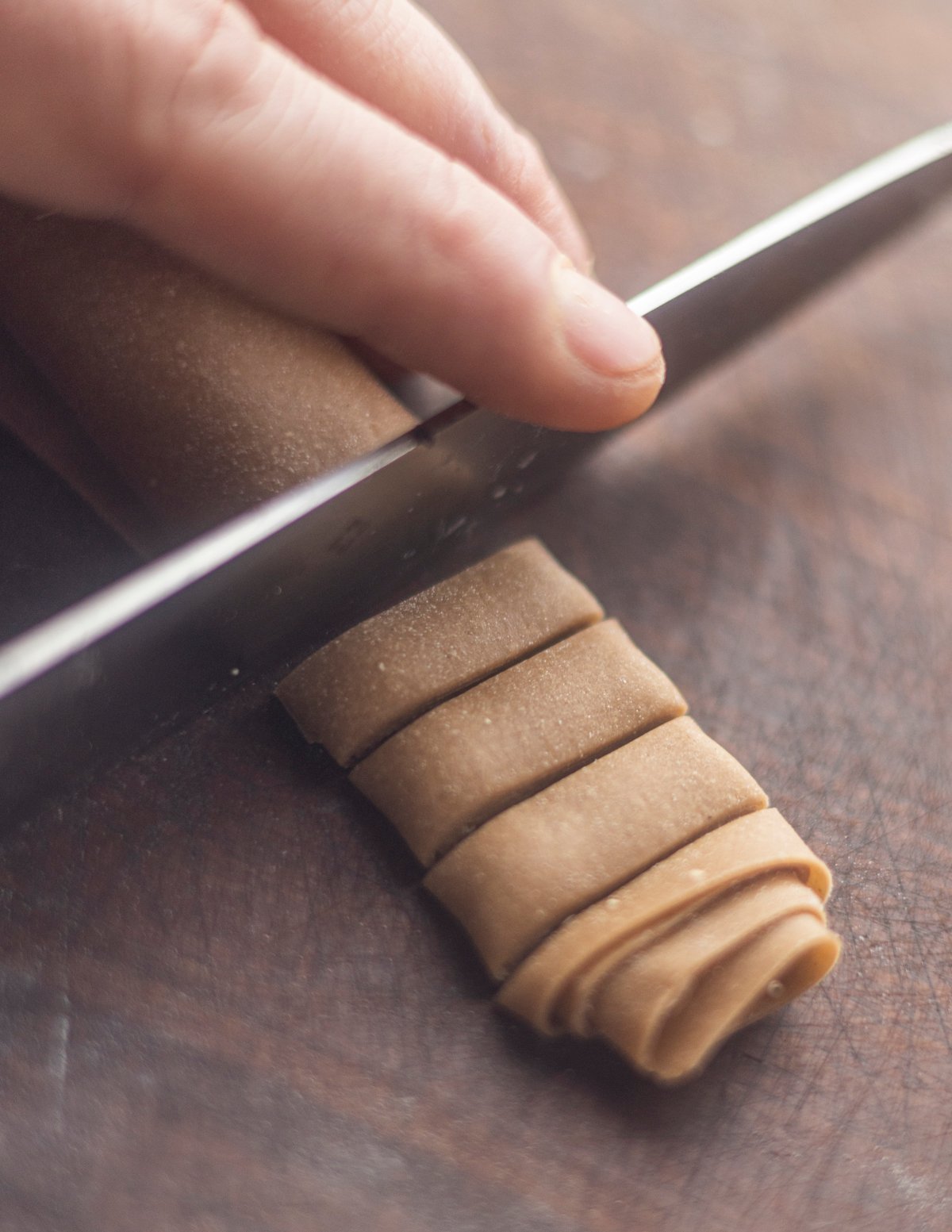
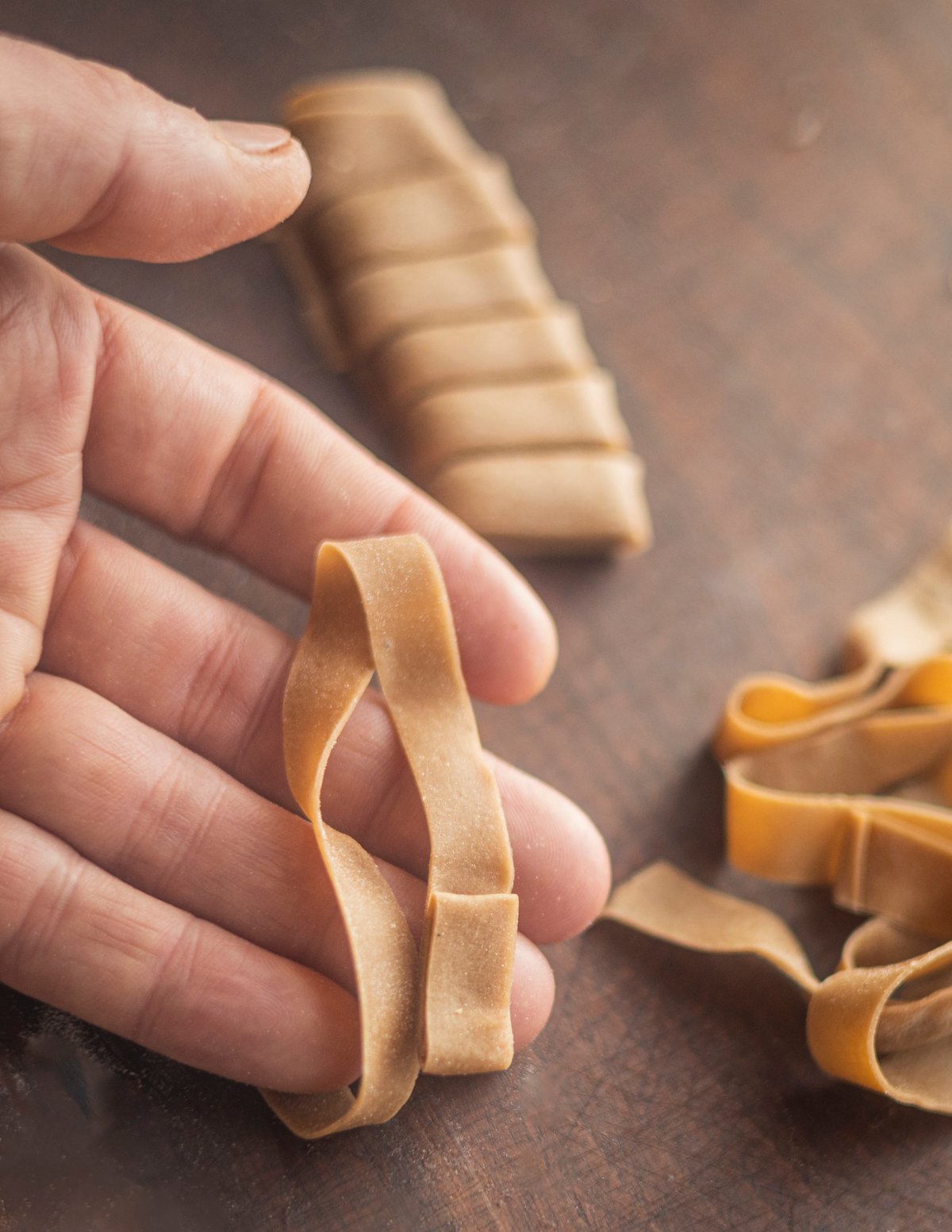
To cook the pasta, bring a pot of salted water to a boil and cook the noodles until just tender. This will take 1-2 minutes. Fresh pasta cooks in a fraction of the time as dried pasta.
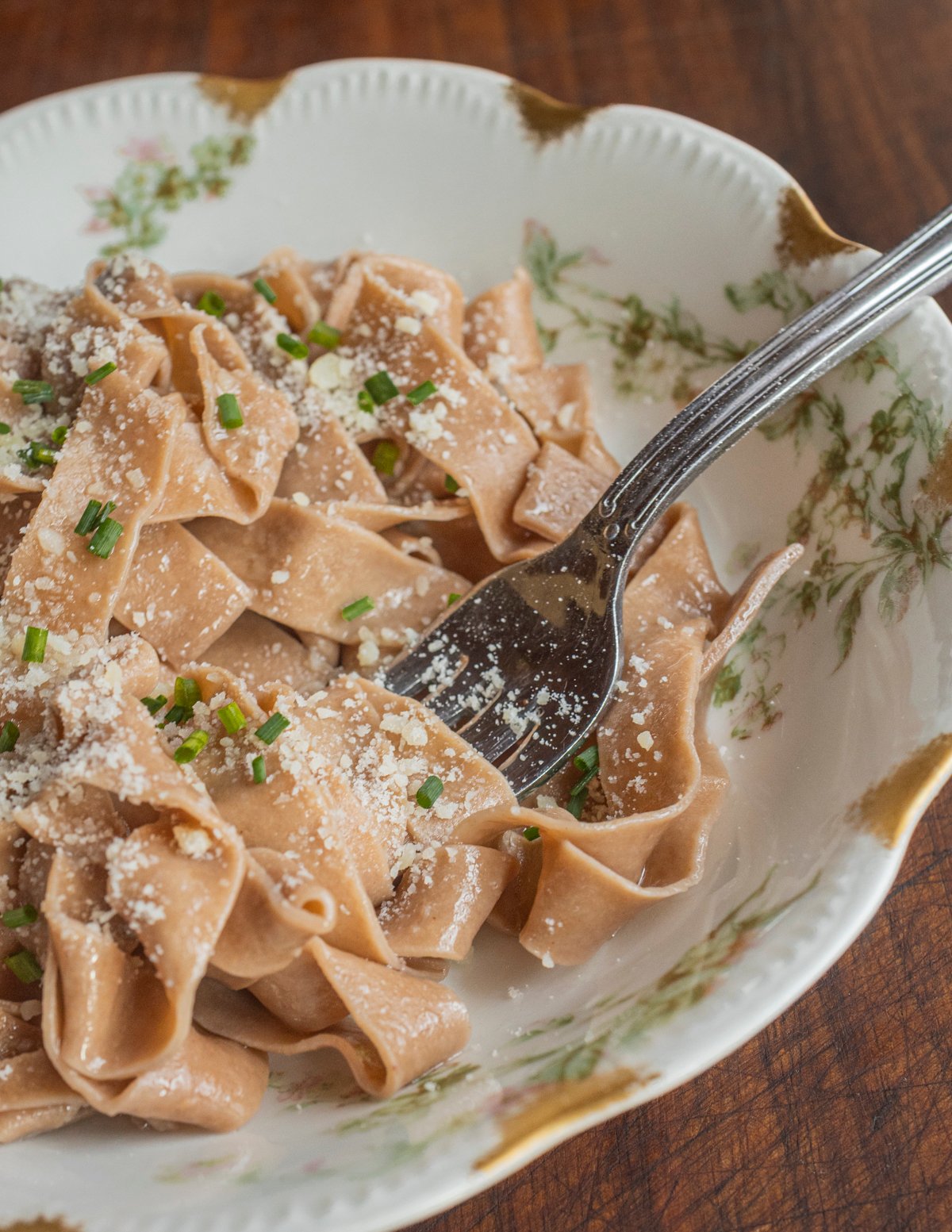
It's great served with game meat and rich sauces made from venison, wild board, pheasant, duck or goose. It's also good with wild mushrooms, or just brown butter, sage and a sprinkle of parmesan.
Related Posts
- French Cream of Chestnut Soup (Potage aux Marrons)
- Chestnut Flour Gnocchi
- Chestnut Polenta (Polenta di Castagne con Ricotta)
Homemade Chestnut Pasta
Equipment
- Pasta maker
- Rolling Pin
- Stand Mixer with paddle attachment
- baking sheet
Ingredients
- 5 large egg yolks
- ¼ teaspoon kosher salt
- ½ lb Italian chestnut flour see note
- ½ lb all purpose or high gluten flour
- 3 tablespoons cold water or as needed to make a smooth dough
Instructions
- Combine the salt and flours in a stand mixer or mixing bowl.
- Add the egg yolks and water to the flours and mix using the paddle attachment until the mixture starts to come together, this should take less than a minute.
- Remove the dough from the mixer and knead for 30 seconds until it’s smooth and uniform, then wrap in cling film and refrigerate.
- Remove the dough, cut into ⅙ths and roll through the pasta machine.
- Roll out a piece of dough through the widest setting on the pasta machine.
- Fold the dough over itself in thirds so it matches the width of the pasta roller.
- Roll out the dough to the 3rd thinnest setting on the pasta roller.
- Roll the sheet of dough up, cut into slices, unravel, toss lightly in flour and reserve until needed.
- To cook the pasta, bring a pot of salted water to a boil, add the noodles and cook for 1-2 minutes or until just tender. Fresh pasta cooks very quick so be careful not to overcook them.
- Remove the noodles to a pan and toss with a simple sauce like mushrooms and spinach, wild boar ragu, or just butter, parmesan and a handful of chives.

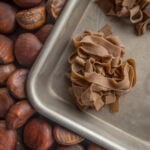
Richard A Stevens
Ok, I made this dough/pasta completely gluten free.
What I did:
6 egg yolks
1/4 tsp salt
2 tsp xanthan gum
1 tsp psyllium husk
4 Tbsp cold water
1/2 cup home stone ground chestnut flour (Wondermill Jr.) (3 oz)
1/2 cup GF King Arthur All purpose GF flour. (3 oz)
I let the dough sit in the refrigerator overnight in cling wrap. I was able to roll it out using a Marcato pasta maker. I rolled it to a 3 setting and then cut in half and rolled each half to a 5 setting. Then I cut it into fettuccine. You need to use a lot of GF flour to keep it from sticking to the rollers but it does work. Next batch I might use even more xanthan gum. The dough is not brittle but it's no wheat dough either. 😉
Alan Bergo
Thanks for sharing Richard.
Richard A Stevens
Alan,
I think your measurements are off. Did you mean 1/2 cup of flour(s). I measured 1/2 lb (8 oz) of flour(s) and it is WAY more volume then you show in your video as well as I had to add A LOT of water to get a dough.
Alan Bergo
Hi Richard, the measurements are correct. I need some more information to be able to help here, but the most important thing to know (that I tried to be very clear about in the post) is that chestnut flour is confusingly under-standardized, and the consistency of the grind varies drastically from brand to brand, with homemade flour being the most coarse and tricky to use in a dough. Some recipes are more forgiving, and if you have coarse chestnut flour I recommend making the chestnut crepes on this site first. Coarse chestnut flour will take longer to hydrate, which can mean you might end up adding more water when making the dough. The flour I'm using is the most expensive as it's much finer than you can possibly get at home, and the extremely fine texture makes it possible to use half of the total weight of flour in the recipe, as opposed to a typical 30% rule when adding non-glutinous flours to pasta doughs without having them fail. The texture of the flour makes a BIG difference. Eventually I'll get around to making some batches with homemade chestnut flour this fall, until then if you want the exact product shown here you'll want to use the spendy flour, or come up with a workaround as you've already done. Also, as with most pasta doughs, water measurements are approximate and dough making is a learned skill, but the texture of the flour is the hidden learning curve here.
Richard A Stevens
Understood. I used home chestnut flour and it is very fine as I stone ground it myself through a Wondermill. I also used GF flour. I figured since it was a weight measurement it would be okay. I'm going to drastically reduce the weight and try again. I want a dough that is mostly egg, not water like you have and what I made was a dough that was mostly water, not egg! I'll let you know what weights looked most like your video.
Alan Bergo
Oh if you’re using GF flour too that will also make a big difference. Those flour mixes are a complex mix of different starches that will also contribute to different hydration rates that are different from typical flour. It’s hard to describe just how fine the chestnut flour I’m using in this post is, there’s a reason it’s $30 a bag. Either way please share your experiments here as it will help others in the future.
Richard A Stevens
I though you were gluten free. Did you try making the pasta with GF all purpose flour?
Alan Bergo
Hi Richard, yes, I’m GF from the Lyme. As I’m not celiac I can still handle flour and in order to make sure recipes work I do keep AP at my house for testing. I taste it to make sure it works, but I give the food to neighbors now. I haven’t made it with GF flour, but it will probably work if you don’t try to roll it super thin. If you’re Gf, making Gnochetti with the dough would be a good option to start with.
Richard A Stevens
Well I guess I should do a spell check before I post. Sigh. Thanks for the quick response. I think I will try GF 1:1 replacement and add some xanthan gum and see how it goes.